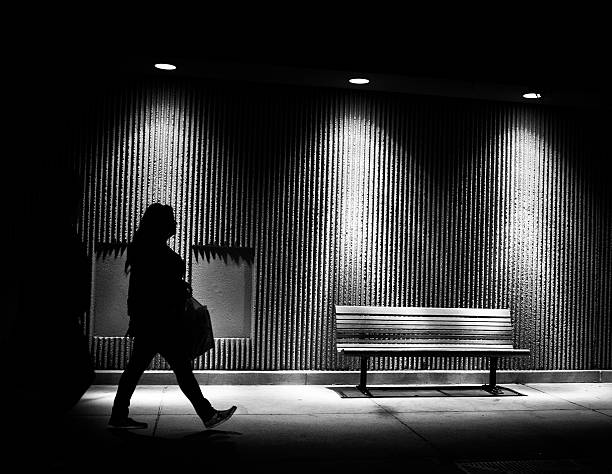
Courthouses are supposed to be temples of sober reasoning where facts, evidence, and law determine outcomes. Yet the human story that plays out inside courtrooms is never entirely predictable. Over the years, a surprising number of defendants have presented excuses so strange that casual observers expect ridicule, not victory. And yet, for a variety of legal, medical, and procedural reasons, some of these odd defenses have succeeded. Reading these cases is less about laughter and more about how the mechanics of justice work when reason, doubt, and the limits of proof intersect.
At the heart of many successful oddball defenses is a basic legal truth: criminal convictions generally require proof beyond a reasonable doubt. If an alternative explanation creates reasonable doubt about a defendant’s guilt — even an explanation that sounds implausible — the court may be bound to acquit. Other times the win comes from technicalities: improper procedure, broken chains of custody, or constitutional errors that force dismissal regardless of the underlying facts. Still other victories rest on human factors: credible expert testimony about mental state, medical conditions that impair conscious control, or rare biological realities that complicate straightforward forensic claims.
Consider the sleepwalking defense. To most people it sounds like an excuse from a tall tale: “I broke into a house and stole things, but I was sleepwalking.” Yet medical science recognizes parasomnias, and courts have sometimes accepted that actions performed during such episodes are involuntary.

Where documented medical history, expert testimony, and corroborating evidence show that a person truly lacked awareness during an incident, the legal system can treat that lack of awareness as negating criminal intent. The result is not a free pass for wrongdoing but a recognition that intent, a foundation of many crimes, was absent.
Then there are defenses that rely on the peculiarities of forensic evidence. DNA testing revolutionized criminal investigations by providing strong identification in many cases. But DNA is not infallible. Identical twins share nearly indistinguishable genetic profiles, and at times identical twin defenses have generated reasonable doubt where DNA was the primary link to a crime. Similarly, when forensic methods are improperly employed or the evidence is contaminated, judges may rule that the prosecution’s scientific proof fails to meet the threshold required for conviction.
Some wins come from procedural failures. The chain of custody for physical evidence is a technical but critical concept: investigators must document who handled each piece of evidence from collection to courtroom display. If prosecutors cannot show an unbroken, reliable chain, a judge may exclude critical items. That leaves the prosecution with gaps it cannot bridge, and reasonable doubt follows. Likewise, mistakes in obtaining evidence — a warrant lacking probable cause, a search that violated constitutional protections — can force courts to throw out key material. In such cases the defense victory is not an endorsement of the defendant’s behavior but a vindication of legal safeguards intended to prevent abuse.
Human behavior also produces startling courtroom stories. There have been reported cases in which defendants blamed supernatural influence or possession, asserting they were compelled by spiritual forces. While judges do not adjudicate the supernatural, these claims have sometimes been framed as evidence of a disturbed mental state or extreme suggestibility, which in turn can support a defense based on diminished capacity. When credible psychiatric evaluation supports the claim that a defendant’s ability to form intent was impaired, courts have shown they will consider that evidence seriously.
Pets have played unpredictable roles in trials. Anecdotes abound of crucial documents being damaged or lost, with defense teams pointing to family pets as the culprits.

A shredded file can be more than an amusing detail; it can destroy the prosecution’s documentary proof or at least introduce ambiguity about what the record actually contained. Judges and juries respond to gaps, and sometimes a torn report or missing receipt undermines a narrative the state has carefully assembled.
Then there are the strategic uses of identity and alibi. A defense that points to the existence of an identical sibling, or to a doppelgänger on the scene, can undercut eyewitness testimony. Human memory is notoriously fallible; witnesses can be confident yet wrong. When independent evidence cannot clearly differentiate between two physically similar individuals, doubt becomes reasonable. In complex, crowded settings where recognition is difficult, the simplest explanation — mistaken identity — can be sufficient to prevent a guilty verdict.
Equally surprising are cases where ignorance of a law, while typically not a valid defense, has been used to generate reasonable doubt because of recent changes or ambiguous public notice. Laws that shift rapidly, or that require specific regulatory registration or disclosure, may produce situations where ordinary citizens genuinely do not know they have crossed a legal line. If a statute was altered without proper notice in a way that a person could reasonably misunderstand, judges have sometimes tempered punishment or even dismissed charges in the interest of fairness.
These unusual defenses highlight another important aspect of justice: discretion. Judges, juries, and prosecutors exercise discretion at every stage. A prosecutor may decline to pursue a case where the political, social, or evidentiary context makes conviction unlikely. A judge may accept a plea to a lesser offense rather than risk a public trial that will likely end in acquittal. Defense lawyers sometimes present a wild-sounding theory not because they expect to persuade everyone but because it draws attention to the weaknesses in the prosecution’s case. Litigation, in practice, is as much about strategy as it is about facts.
Public reaction to these strange courtroom stories is mixed. Some people view odd excuses and successful defenses as emblematic of legal system loopholes that allow the guilty to escape. Others see the same stories as proof that the system protects the innocent and prevents overreach. Both reactions reflect a healthy tension: on one hand, society demands accountability; on the other, it insists on safeguards to prevent wrongful conviction. The memorable cases where odd defenses won remind us that the justice system is designed not simply to punish but to ensure that punishment follows proof.
That tension also fuels debates about reform. Critics ask whether legal technicalities sometimes subvert substantive justice, arguing for rules that focus more on outcomes than procedure. Reformers caution that trimming technical protections risks expanding state power and increasing the chance of error. The balance between robust procedural safeguards and effective law enforcement is a living conversation in legislatures, bar associations, and academic circles.
There is also a pedagogical value in these stories for anyone who studies law. They teach aspiring lawyers about the importance of thorough investigation, the fragility of evidence, and the ethical imperative to defend clients zealously within legal bounds. For the public, these narratives are a reminder to look deeper than headlines. Behind every sensational acquittal is a tangle of facts, experts, and rules that shaped the result.
Ultimately, the odd excuses that have succeeded in court are not examples of a broken system so much as proof of a system that confronts complexity. Whether the defense rests on a medical condition, a pet’s appetite, a forensic gap, or a legal technicality, the outcome often reflects the court’s effort to apply law to messy human life. The stories are strange, yes, but they also illuminate the core principle that underpins fair adjudication: when the state cannot prove its case beyond a reasonable doubt, the law requires restraint.
In the end, these courtroom oddities leave a lasting question rather than a neat answer: how should justice balance certainty and caution when human behavior refuses to be tidy


Comments (0)